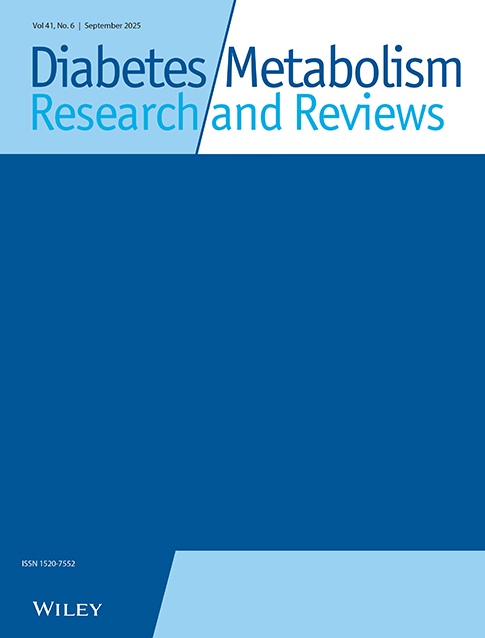In this issue
Protease-resistant ligands for type 1 diabetes
The major histocompatibility complex (MHC) class II provides the primary genetic risk factor for type 1 diabetes mellitus (T1D) development. MHC class II molecules are expressed on antigen presenting cells (APC) and orchestrate T cell responses. MHC class II bound peptides can be modified to execute immunomodulatory functions by inducing T cell antagonism, anergy, or agonism. In this issue we summarize the latest achievements in processing of self-antigens in the context of T1D and the identification of diabetogenic T cell epitopes. A thorough understanding of processing and presentation of (pro)insulin is crucial to generation of novel antigen-based immunomodulators.
Personalized approach to type 2 diabetes management
The authors have discussed and assessed the management of type 2 diabetes in the light of recent trials and the introduction of new therapies. They find that the targets of therapy for hyperglycaemia should be flexible, being less strict with increasing age, disease duration and complications. The available drugs each have merits. These merits must be balanced with disadvantages including relative cost in determining appropriate therapy. Given the complexity in assessing the matrix of options a personalised approach is recommended in assessing each subject for glucose based treatment.
Age, insulin resistance, IFG/IGT, ethnic differences
The impact of age on metabolic disorders has clinical implications in intervention and management of pre-diabetes in elderly populations. In this study we explored to what extent insulin metabolic disorders contribute to the increase in age-related impaired glucose regulation. We suggest that the deterioration in glucose metabolism with age is only partly explained by defects in insulin action and insulin secretion.
Binding of Mannose- binding lectin to fructoselysines
The mechanisms by which elevated glucose concentrations cause diabetic complications are still poorly understood. This paper shows that mannose-binding lectin (MBL) binds with significant affinity to fructoselysines, which form through a spontaneous reaction of glucose with the side chain of lysines. This binding is highly cooperative with respect to fructoselysine density and stimulates complement activation. It may therefore provide a physiopathological link between enhanced glycation and complement activation in diabetes. The cooperative character of this binding may explain the high sensitivity of diabetic complications to hyperglycemia.
Association of candidate genes with T2D in Mexico
We analyzed the association of 14 polymorphisms located within 10 candidate genes (TCF7L2, ENPP1, ADRB3, KCNJ11, LEPR, PPARγ, FTO, CDKAL1, SIRT1 and HHEX) with type 2 diabetes and metabolic syndrome in a sample from Mexico City. Variants located within the gene TCF7L2 were strongly associated with type 2 diabetes, but not with metabolic syndrome, confirming previously reported associations between TCF7L2 polymorphisms and diabetes risk. The non-synonymous ADRB3 rs4994 polymorphism was associated with both type 2 diabetes and metabolic syndrome.
GAD65- and proinsulin- specific T cells in stiff- person syndrome (SPS)
Autoantibodies to glutamic acid decarboxylase (GAD65) are involved in the pathophysiology of stiff-person syndrome (SPS) and type 1 diabetes. It is unclear to which extent immunity to GAD and other beta-cell autoantigens can accompany SPS without T1D. We evaluated the frequency and phenotype of GAD65 and proinsulin-specific T cells for 46 months in a non-diabetic SPS patient using MHC class II tetramers, and correlated these findings to autoantibody status and clinical parameters. Despite T-cell reactivity to both GAD65 and proinsulin, autoantibodies to islet-autoantigens other than GAD did not develop. Prediction of T1D in stiff-person syndrome is discussed.
Shape of OGTT glucose curve and diabetes risk
The objective of this paper is to assess the relationship between the shape of plasma glucose concentration during the OGTT and future risk for T2DM in various glucose intolerance groups. 2445 non-diabetic subjects from the Botnia study received an OGTT with measurement of plasma glucose concentration at 0, 30, 60, and 120 min at baseline and after 7–8 years of follow-up. The results show that subjects whose post-load plasma glucose concentration returned faster to below their FPG level had greater insulin sensitivity, superior beta cell function, and lower risk of developing type 2 diabetes after 7–8 years.
Development and characterization of long acting GLP
LY2189265 is a long-acting GLP-1 analogue based on the fusion of a DPP-IV protected GLP-1 moiety and an IgG4-Fc carrier protein. LY2189265 is a potent insulinotropic agent in vitro in rat and cynomolgus monkey cell-based systems and demonstrates prolonged time-action in rodents and primates. LY2189265 has also been designed for improved safety by removal of potential T-cell epitopes and elimination of Fc gamma receptor interaction to decrease the potential for antibody-dependent cell-mediated cytotoxicity. In summary, LY2189265 retains the effects of GLP-1 with increased half-life and efficacy, supporting further evaluation as a once-weekly treatment of type 2 diabetes.
Pioglitazone vs. rosiglitazone on liver explants
Recent clinical studies indicated that pioglitazone (PIO) has a more pronounced beneficial effect on lipid parameters than rosiglitazone (ROSI) when used for the treatment of type 2 diabetes. We tested the direct effect of PIO and ROSI on lipid liver metabolism using mice liver slices. Biochemical and molecular data suggested that PIO reduces HDL-cholesterol uptake while ROSI induces lipogenesis and apoB secretion. Concurrently, only ROSI significantly induced PPAR-gamma mRNA levels. Besides, PIO appeared to be a more potent activator of AMPK than ROSI. In conclusion, both glitazones exert specific direct effects on liver cells that may differently modulate plasma lipids.
Diet induced obesity produces vascular/neural dysfunction
Rats fed a high fat diet for 32 weeks developed sensory neuropathy as indicated by slowing of sensory nerve conduction velocity and thermal hypoalgesia. Motor nerve conduction velocity and endoneurial blood flow were not impaired. Intraepidermal nerve fiber density was significantly reduced in rats fed high fat. Vascular relaxation to acetylcholine and calcitonin gene-related peptide was decreased and expression of neutral endopeptidase increased in epineurial arterioles of rats fed a high fat diet. We conclude that diet-induced obesity causes microvascular and neural dysfunction.




